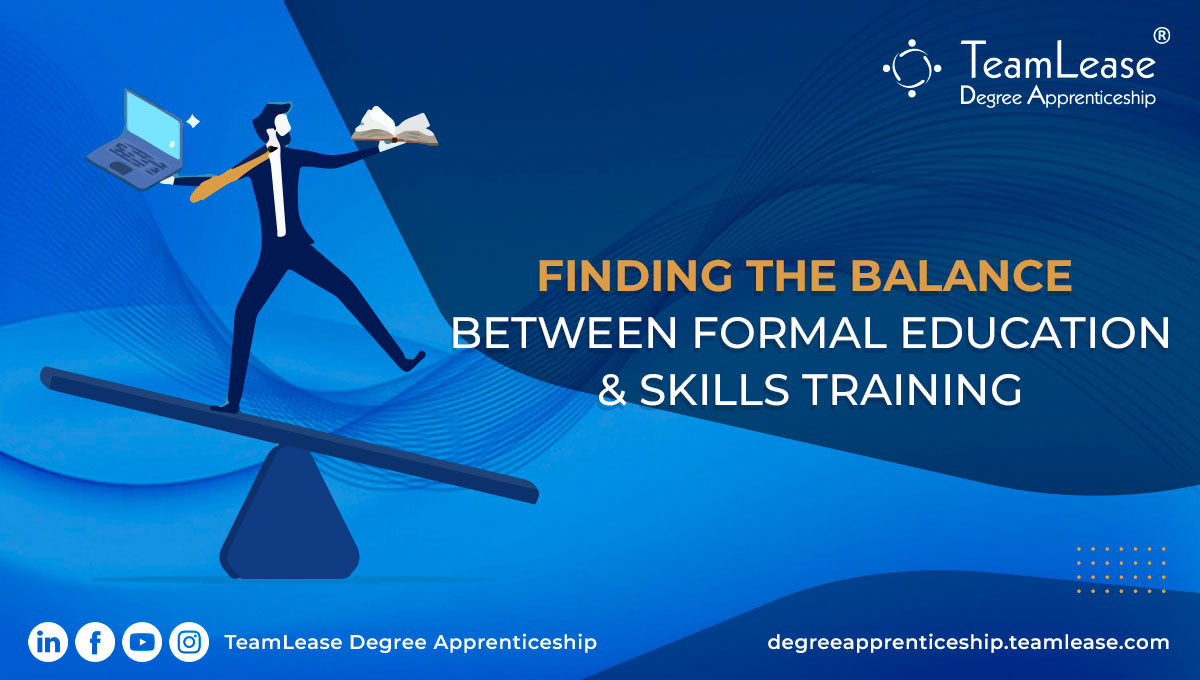According to the International Labour Organisation (ILO), India is facing a severe skill shortage. By 2030, the 29 million talent deficit is expected to reach 53 percent of Indian businesses. Seeking to reduce these alarming statistics, ILO highlighted that 63 percent of posts remain vacant as organisations are struggling to find skilled professionals suited for critically important roles. Post covid our industries are facing a talent crisis and institutes are suffering from the employability crisis. Employers are not able to find the right talent, and they have this huge challenge of getting the right skills for the kind of job roles which are evolving today. And at the same time, employers have a very restrictive participation in the skill development, which doesn’t help academia to upgrade with time. The collaboration between academia and industry is somewhat missing.
How are industries addressing the issues of talent requirements?
All the organizations are facing challenges, more so, with the new scenario now, particularly due to COVID-19. The primary challenge that they are facing is the lack of skill in the people that they are recruiting particularly with freshers. For the last two years students have not gone to college and the grip has come down a lot. Colleges are doing their best, but somehow their best is not as per the industry expectations. Now the campus hirings are moving towards more on the basis of conceptual knowledge rather than scorecards. Deepak Bhatia - Plant HR Head, Secure Meters Ltd., Sanand, Ahmedabad has actually designed a program for new hires to go under six to eight months of training. They evaluate them on the basis of the assignments and then are given feedback as per the identified gaps or shortfalls. The induction program focuses on both technical knowledges as well as a soft skill.
Organizations utilize all modes of recruitment available in the market. Although getting talent is not an easy search now. Industry looks for students who come with clear concepts which makes them easier to train and fit right with the working environment. Secondly, the most common challenge with kids coming out of virtual classes is the requirement of comfortable jobs. Not everyone can have white collar roles, and to have clear basics and concepts, one is required to work on shop floors. Mr. Taralkumar Maheshwary, HR Head, RR Kabel Ltd., Vadodara gives insight to internal challenges, when a person joins they start comparing himself or herself with the availability in the market. And then comes the actual concern of retaining the talent that has taken in. People are not mentally prepared for the kind of work environment they're getting into something which they are unaware of, which kind of gives them a shock. And that's the reason for heavy attrition, where people stay put for some time, but as they get to know what work they have to do they move on.
Vini Somnath - Head - Talent Management, National Engineering Industries Ltd, Jaipur, and Vadodara think that the reason for this increased skill gap is the lack of change in the curricula that is being opted by the colleges. Students are deprived of getting the latest knowledge with the evolved industry. And to combat that, academia needs to upgrade the vertical curricula with the ways all industries are progressing. There has to be some connection so that when students are out, they have something relevant to what they have studied and what they're saying in the industry.
Looking at the concerns of the industry, the academic representative Dr. Avani Umatt acknowledges these facts and shares her views to collaborate with the industry in ensuring to create more job readiness people. The market is in need of a skills university to bridge the gap between what the candidate has and what the expectations of the industry are, and what is needed. It was correctly mentioned, a lot of universities are offering outdated curricula. The requirement of one industry might be conceptual clarity, while the other industry requires skills that are making the candidate productive from day one. So we need a curriculum designed with inputs from specific industry types. Inputs have to come from both the stakeholders, that is the education as well as the industry, and a mechanism where we can have a constant revision of curriculum to remain relevant to the growing needs of the industry.
Academia and industry can come together with a degree in apprenticeship programs, where the candidates who are apprentices get upward mobility in terms of academic supplementation with on-job training (OJT) to ensure that they can gain qualification, as well as experience in hand. Certain industries are doing the pre-placement training, they have to invest in training those candidates who already have the requisite qualification. ``But if the industry could get a candidate where they are pre trained before, they don't have to go through this pre-training, then it will really increase productivity and the ROI will be much higher,” said Dr Umatt.
NEP - brings the industry and education institutions together
The exciting part is that the theoretical platform for bringing academia and industry together has now been enabled by the New Education Policy and this whole focus on degree apprenticeship programs that brings the industry and educational institutions together. Moreover, it is not restricted to degree students, some industries may need certificate students, diploma students, finance graduates, finance diploma holders, all of this is now allowed in apprenticeship. Surajit Roy, Apprentice Expert, Ex- Senior Head, NSDC says, the only thing which needs to be done now, as a next step, is a lot of talking. But around that talk, let's establish proof of concept: the industry and TLSU can come together and design some degree apprenticeship courses, certificate courses, diploma courses for meeting the requirements of the Baroda industry. What are your views on that?




No comments yet
Your Comment